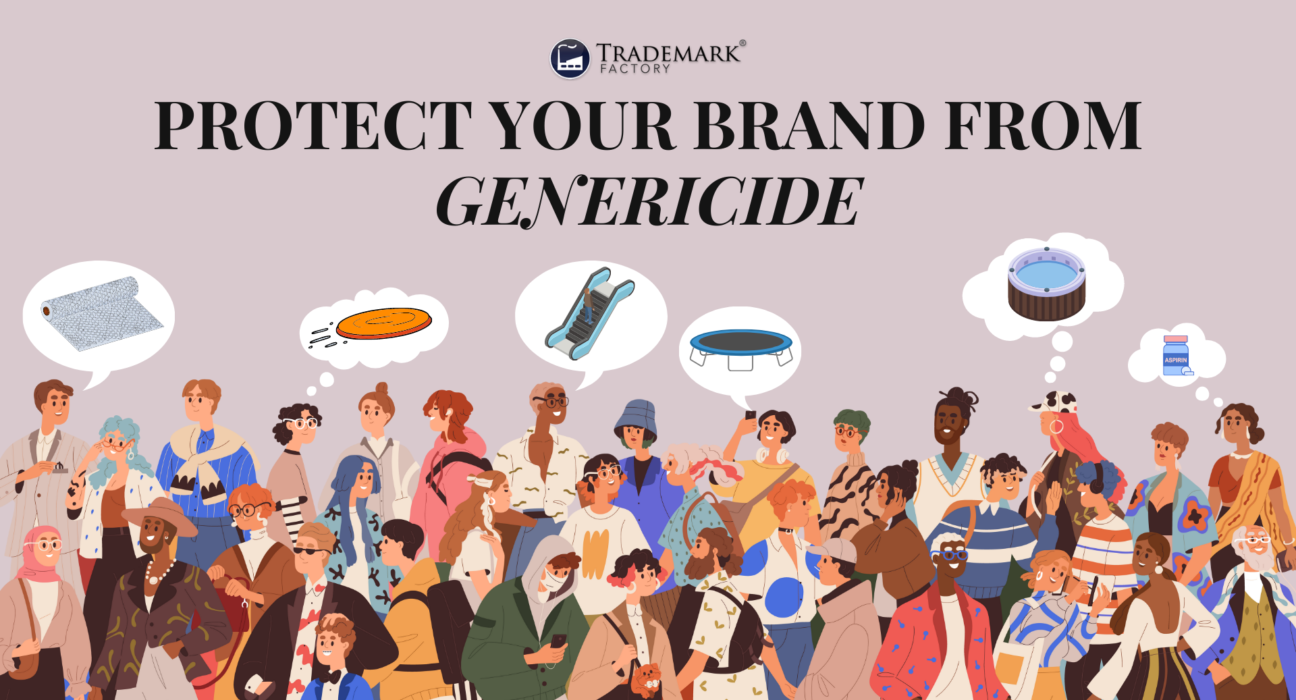PROTECT YOUR BRAND: HOW TO AVOID GENERICIDE
In your daily life, have you noticed how often you or a friend use a brand as a generic term for a certain service or product? If you’ve been keeping up with our blogs, we’ve gone over combatting genericism. Just in case you missed it though, here’s a rundown:
Genericide is a legal term that refers to the dilution or loss of a trademark’s protected status. In other words, it’s when a trademark becomes so well known that it morphs into a product category.
Now here’s a tricky example to think about: there are five types of trademarks (generic, descriptive, arbitrary, fanciful, and suggestive). Your best bet would be going for arbitrary, fanciful, or suggestive, in terms of protection strength.
It’s harder to steal your brand that way! Making up a word, using a completely random one, or having the name hint its service could help your brand stand out. But be careful about it, because if it’s under the spotlight for too long, circumstances are inevitable.
The other side to success.
Success hurts in a unique way though, because if they can’t steal your brand, the public will associate it with its service. We all know search engines— we use them on a daily basis, we have Yahoo, Bing, and CC Search. But for some reason, we always say “Hold on, let me Google that real quick.”
We’ve already associated Google as the go-to term for looking something up online despite knowing that there are other search engines out there. Because it’s convenient, fast, and accurate. Being the best in your field can have its downsides, too.
Another great example of a brand fighting for its “life” is Xerox, where they’ve created campaigns to stop their impending genericide. Why? Because most people don’t use the word “photocopy”, instead they use “Xerox”.
So how exactly do we tackle this issue?
You need to register your trademark.
Your brand is one of your most valuable assets. It’s what sets your company apart from the competition, and it’s what consumers come to know and trust you for. So you need to do everything in your power to protect it.
One way to do that is by registering a trademark. You’re given the legal presumption of ownership when you register your trademark. This means that if someone else tries to use your trademark without permission, you have a much stronger case in court.
Not only that, but registering your trademark also enhances your existing rights. It gives you exclusive use of the trademark in your category, so no one else can use it without permission. Plus, it puts others on notice that your trademark is protected, and they could face legal action should they try to misuse it.
But with genericide, you have to keep in mind the enforcing of your registered brand. You have to make sure that no one uses it as a generic term because if the general public catches on, your brand is just another case of aspirin (yes, another genericized brand).
The next step is to look into the fine print.
You should establish rules governing use of your trademark, such as ensuring that it’s always used as an adjective and never a noun or verb. Additionally, it’s important to use a generic term along with the trademarked name in all materials related to the product or service; for example, “Kerosene gas.”
If you notice your trademark has become a go-to word for your product or service—you have to do something about it. It’s wise to explore other options for protecting your brand and intellectual property which includes applying for additional trademarks. While this strategy can be costly initially, it’s worth it in terms of avoiding potential revenue loss down the line.
If you’re advertising your brand, there are a few key things to keep in mind that will help protect it from genericide. First, it’s important to use the trademark symbol(™) when referring to your brand. This sends a signal to customers and other businesses that the name is protected by law and cannot be used as a generic term.
Second, make sure that your brand guidelines and any instructions you give people who use your brand are clear and precise. Make sure they understand that your brand is not just a common name but an asset that needs to be treated with respect.
Finally, take action against anyone who misuses or abuses your trademarked brand name. Even if it’s done innocently, it could cause confusion as to who owns the rights to the name, so it’s important to be proactive when it comes to protecting your rights.
TLDR?
It’s important to be aware of genericide and how to protect your brand from it. You can do this by trademarking your brand name and by being diligent in policing how your brand is used.
Remember that genericide can occur even if your brand is only used in a specific region, so make sure to protect your brand in all applicable markets.
Get your trademarks done right—get your ® today!


2 Comments